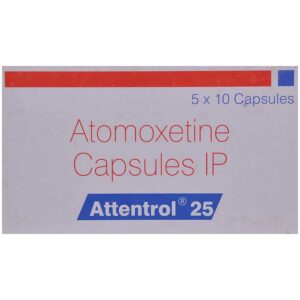ATOMOXETINE
ATOMOXETINE: ATOMOXETINE is a medication used for the treatment of attention deficit hyperactivity disorder (ADHD) in children, adolescents, and adults. It belongs to a class of drugs known as selective norepinephrine reuptake inhibitors (SNRIs).
Mechanism of Action: Atomoxetine works by increasing the levels of norepinephrine in the brain. Norepinephrine plays a role in improving attention, impulse control, and hyperactivity. By inhibiting the reuptake of norepinephrine, atomoxetine enhances its availability and improves ADHD symptoms.
Dosage: The starting dose for children and adolescents is usually 0.5 mg per kilogram of body weight per day, which can be increased after a minimum of three days to a target dose of 1.2 mg/kg/day. The maximum recommended daily dose is 1.4 mg/kg or 100 mg, whichever is lower. For adults, the usual dosage is 40-80 mg per day, depending on individual response and tolerability.
Side Effects: Common side effects of atomoxetine include decreased appetite, nausea, vomiting, constipation, dry mouth, dizziness, insomnia, and increased heart rate. Some individuals may experience mood swings, irritability, or changes in sexual function. In rare cases, atomoxetine may lead to allergic reactions, liver problems, or suicidal thoughts.
It is important to note that atomoxetine is not a stimulant medication like other commonly prescribed ADHD drugs such as methylphenidate or amphetamines. As such, it does not have a potential for abuse or dependence.
Atomoxetine should be used as part of a comprehensive treatment plan that may include behavioral therapy and educational support. It is important to consult a healthcare professional for the appropriate dosage, monitoring, and to discuss potential risks and benefits of using atomoxetine.

